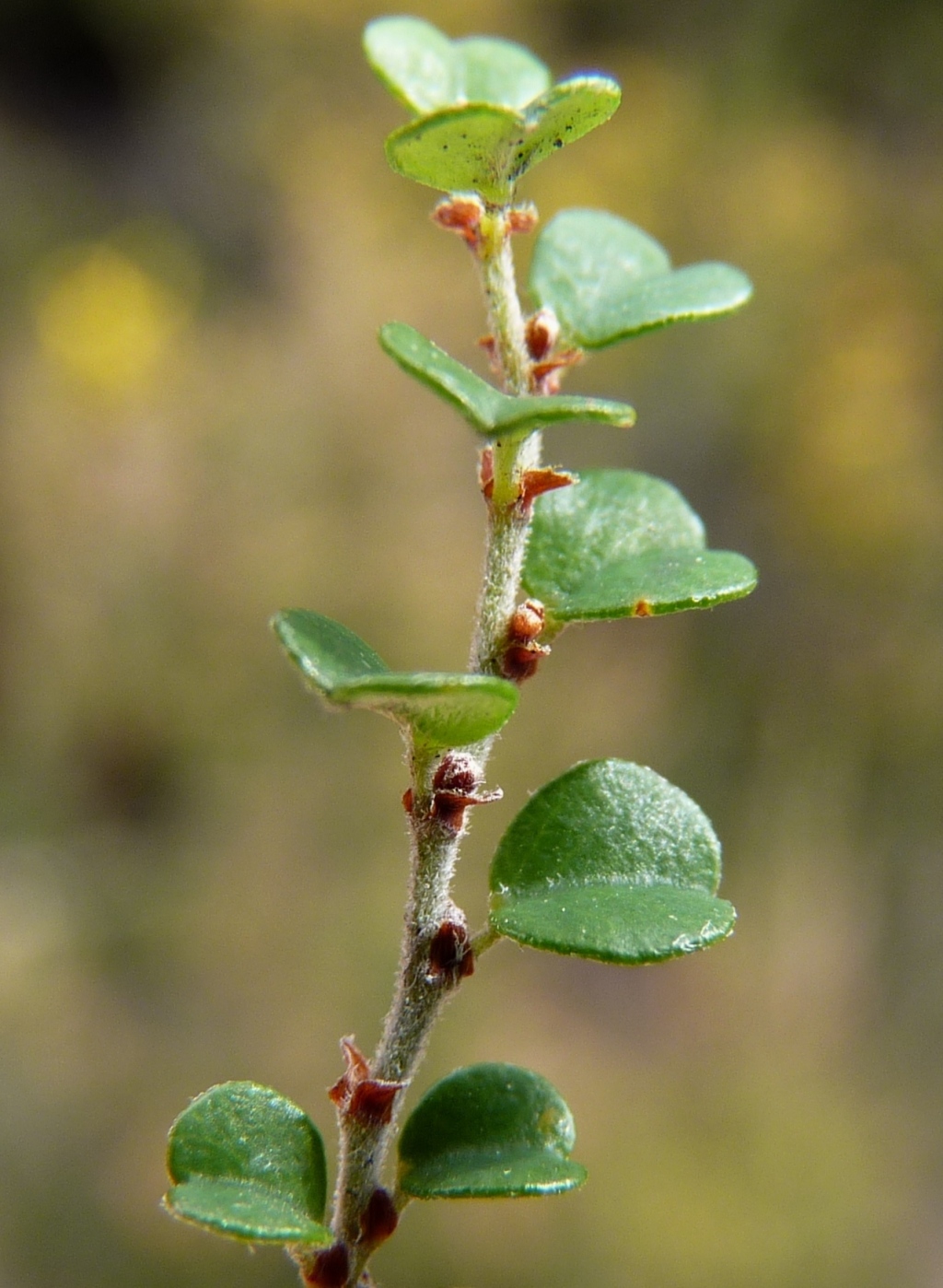Bossiaea sericea
I.Thomps.Erect shrubs to c. 2 m high; branches terete, suberect, with a dense cover of ± straight hairs. Leaves alternate, unifoliate, orbicular, obcordate, broadly obovate, or broadly quadrangular, (1.5–)2–4 mm long, 1.5–5 mm wide; base truncate to slightly cordate; apex broadly rounded, truncate or emarginate; upper surface glabrous, sometimes tuberculate on margins; lower surface flat or slightly concave, sericeous, indumentum usually persistent; margin flat to recurved; stipules triangular, 0.7–2 mm long, glabrous, exceeding petiole, semi-persistent. Flowers solitary, 5–7 mm long; pedicle 1–3.5 mm long, glabrous or pubescent; bracts crowded, broad-ovate, 0.7–2.2 mm long; bracteoles inserted near base of calyx, narrow-ovate or oblong, 0.7–2.5 mm long, glabrous or with hairs near apex, persistent; calyx 2–3.5 mm long, pubescent, or tube glabrous, lobes acute, c. equal to or slightly shorter than tube, upper lobes slightly broader than lower; corolla uniformly bright yellow (margins sometimes tinged pink), petals ± equal in length; ovary stipitate, 2- or 3-ovulate, densely pubescent. Pods broad-elliptic, 6–10 mm long, rusty-pubescent; stipe 1–2.5 mm long. Flowers Dec.–Jan.
EGU, HNF, MonT, VAlp. Also NSW, ACT. Occurs in alpine and subalpine areas above 800 m altitude in north-eastern and eastern Victoria, growing in heath and woodland, often bordering grassland.
A moderately variable species with 3 variants. Plants from Mount Buffalo tend to have smaller, angular leaves with tuberculate margins, and tend to be less hairy. Plants in far eastern Gippsland tend to have much larger stipules, while plants from the north-east tend to have emarginate leaf apices.
Forms part of a species complex with Bossiaea foliosa, B. alpina and B. distichoclada (see notes under those species), with B. sericea and B. distichoclada being the most common and widespread species in Victoria. Proposed hybrids between these two species have been recorded on the Bogong High Plains and Limestone Creek. Proposed hybrids have leaves that lack tubercules and are either flat but lacking long silky hairs below, and have short bracteoles, or have leaves that are convex with long silky hairs below and long bracteoles.
 Spinning
Spinning
